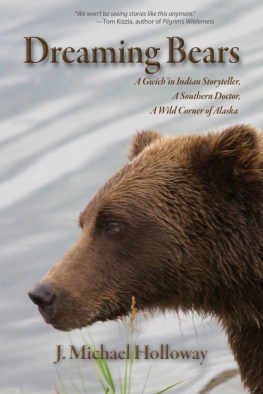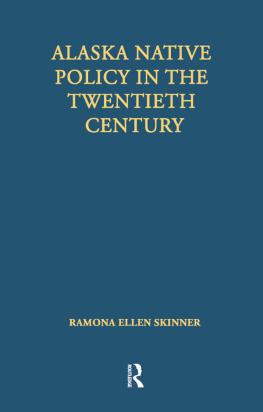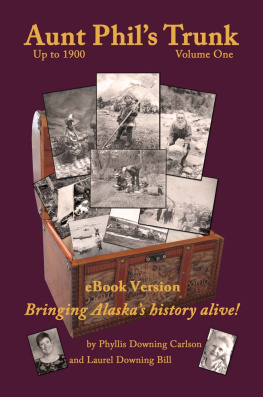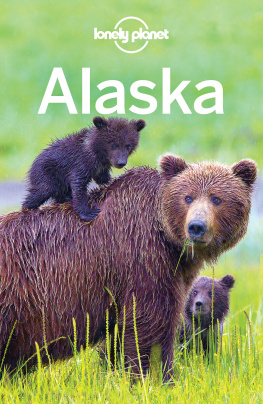LIVING ON THIN ICE
Living on Thin Ice
The Gwichin Natives of Alaska
Steven C. Dinero

Published in 2016 by
Berghahn Books
www.berghahnbooks.com
2016 Steven C. Dinero
All rights reserved. Except for the quotation of short passages for the purposes of criticism and review, no part of this book may be reproduced in any form or by any means, electronic or mechanical, including photocopying, recording, or any information storage and retrieval system now known or to be invented, without written permission of the publisher.
Library of Congress Cataloging-in-Publication Data
Names: Dinero, Steven C., author.
Title: Living on thin ice : the Gwichin natives of Alaska / Steven C. Dinero.
Description: New York : Berghahn Books, [2016] | Includes bibliographical references and index.
Identifiers: LCCN 2015047950 | ISBN 9781785331619 (hardback : alk. paper) | ISBN 9781785331626 (ebook)
Subjects: LCSH: Gwichin IndiansSocial conditionsAlaskaArctic Village. | Gwichin IndiansEthnic identity. | Arctic Village (Alaska) Economic conditions. | Arctic Village (Alaska)Environmental conditions.
Classification: LCC E99.K84 D56 2016 | DDC 305.897/20798dc23
LC record available at hmp://lccn.loc.gov/2015047950
British Library Cataloguing in Publication Data
A catalogue record for this book is available from the British Library
ISBN 978-1-78533-161-9 hardback
ISBN 978-1-78533-162-6 ebook
For My Father
Who First Sparked My Interest in Alaska,
Its Environment, Wildlife, and Peoples
in 1966
Contents
Illustrations, Maps, and Tables
Illustrations
Maps
Tables
Acknowledgments
I first arrived in Arctic Village, Alaska, on a cool, dreary, cloudy Sunday afternoon in early August 1999. After a quick four-wheeler ride, I rolled into the gravel drive of Timothy Sams home, disoriented, tired, and entirely uncertain about where I was or what lay ahead. But Timothy, who sadly passed away in 2007, would serve in the coming days as my teacher-professor. From him I would learn much about Netsaii Gwichin history, values, and, especially, subsistence. And yes, about Netsaii Gwichin struggles as well.
In the coming weeks, months, and years, I would return to Arctic Village repeatedly. Each time, I would learn more but only if, as one of my key mentors Lincoln Tritt (who also died, sadly, in 2012) told me repeatedly, I would listen. As a fast-talking Easterner, this was my greatest challenge. I had to learn that in Arctic Village, the less said, the better. Communication takes many, many forms, and talkingwell, lets just say that the Netsaii Gwichin arent known to talk your ear off. But if you are patient and willing to listen, then you can learn more from the Netsaii Gwichin than you ever learned from decades of formal education in the classroom.
And learn I did. Not only did I learn from Timothy and Lincoln but also from virtually every other community member I encountered over the years. Therefore, many thanks are now due to my numerous friends in Arctic Village who opened up their homes, hearts, arms, and lives to me during the past fifteen years. Without them, needless to say, this work could never have been possible. In particular, I wish to thank the following people for their generosity during this research:
Trimble and Mary Gilbert, Evon Peter and family, Bobby and Annette Gilbert and family, Jim and Julie Hollandsworth and family, Albert Gilbert and family, Brenda Gilbert and family, Virginia Gilbert, Edward Sam, Audrey Tritt and family, Dena Tritt and family, Debbie Tritt, Raymond Tritt, Naomi Tritt, Isaac Tritt, Kenneth Frank and Caroline Tritt-Frank and family, George and Tiffany Yatlin and family, Mabeleen Christian and Joe Chilcote and family, Darryl Scott Clow, Brewster Johnson, Marty Russell and Mitchell Ned and family, Marjorie and Danny Gemmill and family, Faith Gemmill, Fanny Gemmill and family, Lisa Frank and Lynnea, Fabian Frank, Jeannie Frank, Sarah James and family, Gideon James and family, Lillian and Gerry Garnett, Tonya Garnett, Steven and Gayle Tritt and family, Lorraine Tritt and family, Donald Tritt, Franklin Tritt, Allen Tritt, Joel Tritt, Mildred Allan and family, Ernie Peter and family, Kias Peter Jr., Joanne Bryant, Margie Martinez, Shawn Martinez, Cissy Wiehl and family, Bertha Ross and family, Jonathan John and family, Abraham John and family, Joyce John and family, Marie John and Harvey, Marion and Charlie Swaney and family, and Jimmie John. Unfortunately, these thanks come too late for some. These include Bob Allan, Callahan Tritt, Moses Sam Sr., David Panigeo, Ruth Nikolai, Albert James, and Kias Peter Sr.
I want to offer special thanks to Calvin Tritt and Louie John. Calvin and I have spent many hours over the years talking about the Netsaii Gwichin village, history, religion, memories of the past, and hopes for the future. From my very first research trip to the village when he, Timothy, and I worked on rebuilding the wooden floor of the new village chapel to our work on the old chapel years later (see ) to our long evenings spent discussing world politics, Calvin has always shown me patience, kindness, and respect. He has helped me to understand the Netsaii Gwichin in unique and compelling ways. I cherish our friendship.
As for Louie, he is my Gwichin brother. He and I have spent many days, weeks, and months together talking, laughing, and yes, at times, disagreeing. Louie is a unique man, with a unique mission in life. I am indebted to him in ways large and small, for he has taught me so much about his people, his family, and himself as well. I listened to Louie, and as a result, I learned. Thank you, Jah, for everything.
Over the years, I have also received assistance from a variety of agencies to facilitate my travel and research. Though the following views are mine alone, this volume could not have been completed without generous support from the following:
National Geographic Society/Waitt Foundation
National Science FoundationAward No.EEC-0332608
Alaska Humanities Forum
National Endowment for the Humanities
Philadelphia University
Thanks must also go to Editorial Associate Duncan Ranslem, Production Editor Jessica Murphy, my peer reviewers, and everyone at Berghahn for their assistance once again in helping me to put years of material into good order. I am quite indebted to all for their detailed attention, comments, and constructive criticisms in bringing this volume to fruition.
In addition, I wish to thank my children, Ari Dinero and Maya Dinero. They spent much of their childhood in Arctic Village because of me. Often, they helped me to see the place through the youths perspective. Truly, I am thankful that they were with me, creating memories that will last a lifetime.
Lastly, I wish to thank Lore for being there to take on the enormous task of encouraging me throughout the writing of this volume. The following is a labor of love, but at times, like any author, I have hit moments of question and uncertainty. Nevertheless, through it all she was there, offering moral support and more. In short, Lor, I couldnt have done it without you.
Philadelphia, Pennsylvania, USA
21 June 2015
A Note on Methodology
My objectives when I first envisioned this study sometime in 1997 or 1998 and the outcomes are similar, though certainly not identical. At the outset, my interest in studying Arctic Villages development and growth was primarily from a planning perspective. Given my training and interests in developing world settlement systems, I came to this particular indigenous community viewing it as a case study, providing a microcosm of the manifest issues and concerns that virtually all hunter-gatherer communities have experienced to some degree since European contact and colonization.
Next page






